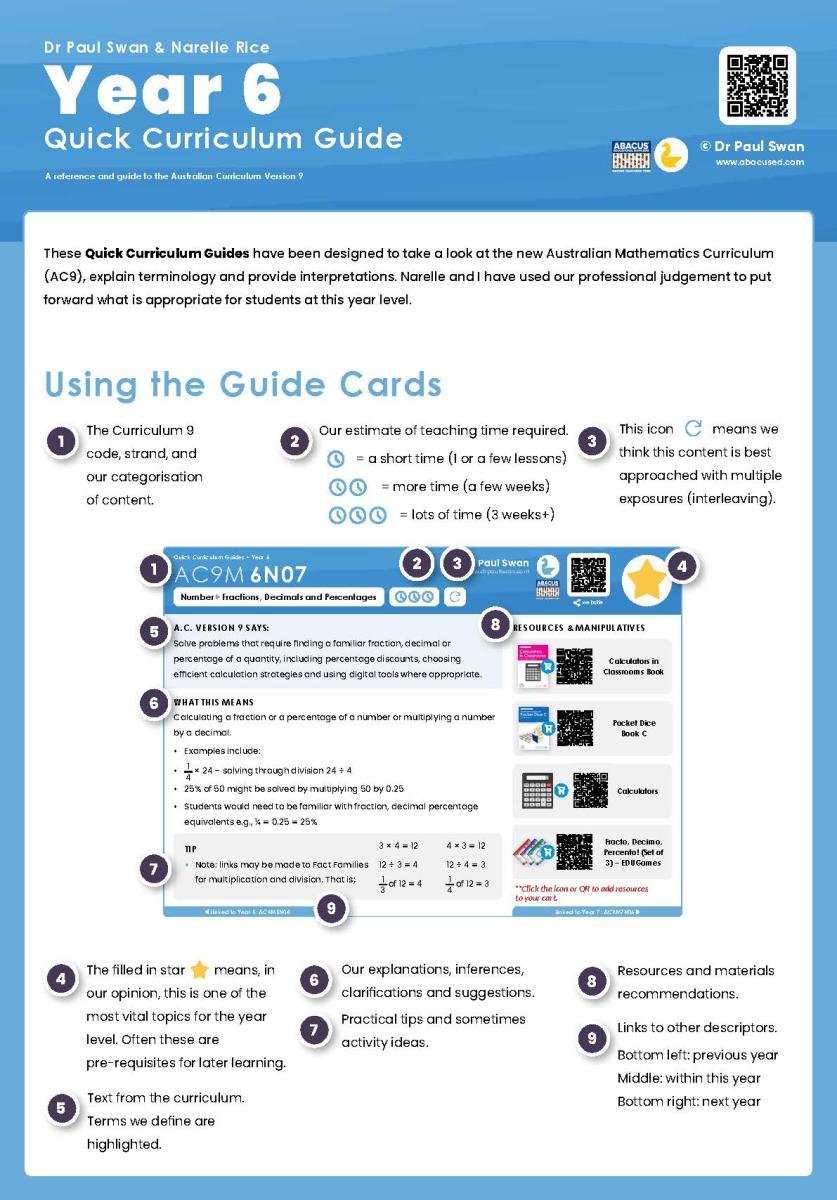Australian Mathematics Curriculum Guide
The curriculum guide by Dr Paul Swan and Narelle Rice simplifies the process of designing lesson plans by explaining mathematical terminology and interpreting the Australian Mathematics Curriculum (AC9) for Foundation to Year 1.
Dr Paul Swan is an award-winning author, highly sought-after speaker and experienced designer of maths games, programs, and resources to support teachers with teaching key maths concepts in a fun and engaging way. Dr Paul Swan and Narelle Rice have also co-authored books such as Using Number Balances Book and Mathematics Vocabulary Activities books for various year levels.
With the interpreted information in this AC9 curriculum guide, teachers will be able to:
- understand what students have learned in the previous year and what might need revision in the current year,
- The precise difference between the year levels,
- content that teachers may be able to combine together, and
- avoid accidental teaching beyond year level.
In addition, the guide features interactive resources (bead strings, counters, bond blocks, and more) needed to carry out class activities to cover a range of mathematics topics. The topics covered in each year level are summarised below. To download the curriculum guides for each year level, click 'Download Now'.
Foundation


Counting, adding, subitising, division, partitioning, patterns, measurement (direct comparison), shapes, location, time, and more.
Year 1


Counting, pattern, shapes, addition, subtraction, division, place value, measurement (direct, indirect), units, time, direction, & more.
Year 2


Place value, fractions, operations, money, additive patterns, units, time (analogue), angle, shapes, location, direction, and more.
Year 3


Place value, fractions, operations, estimation, word problems, pattern, units, time (analogue, digital), angle, money, 3D objects, & more.
Year 4


Number properties, fractions, place value, operations, estimation, problem solving, patterns, units, time, angle, 2D shapes, 3D objects, probability, maps, symmetry, perimeter and area, and more.
Year 5


Place value, factors, fractions, decimals, percentages, operations, estimation, problem solving, pattern, units, perimeter and area, time (12-hr and 24-hr), angle, 2D shapes, 3D objects, location, & more.
Year 6


Integers, number types and properties, fractions, decimals (+ & -), multiplication, percentages, estimation, problem solving, pattern, equations, algebra, units, area, angles, cartesian coordinates, & more.